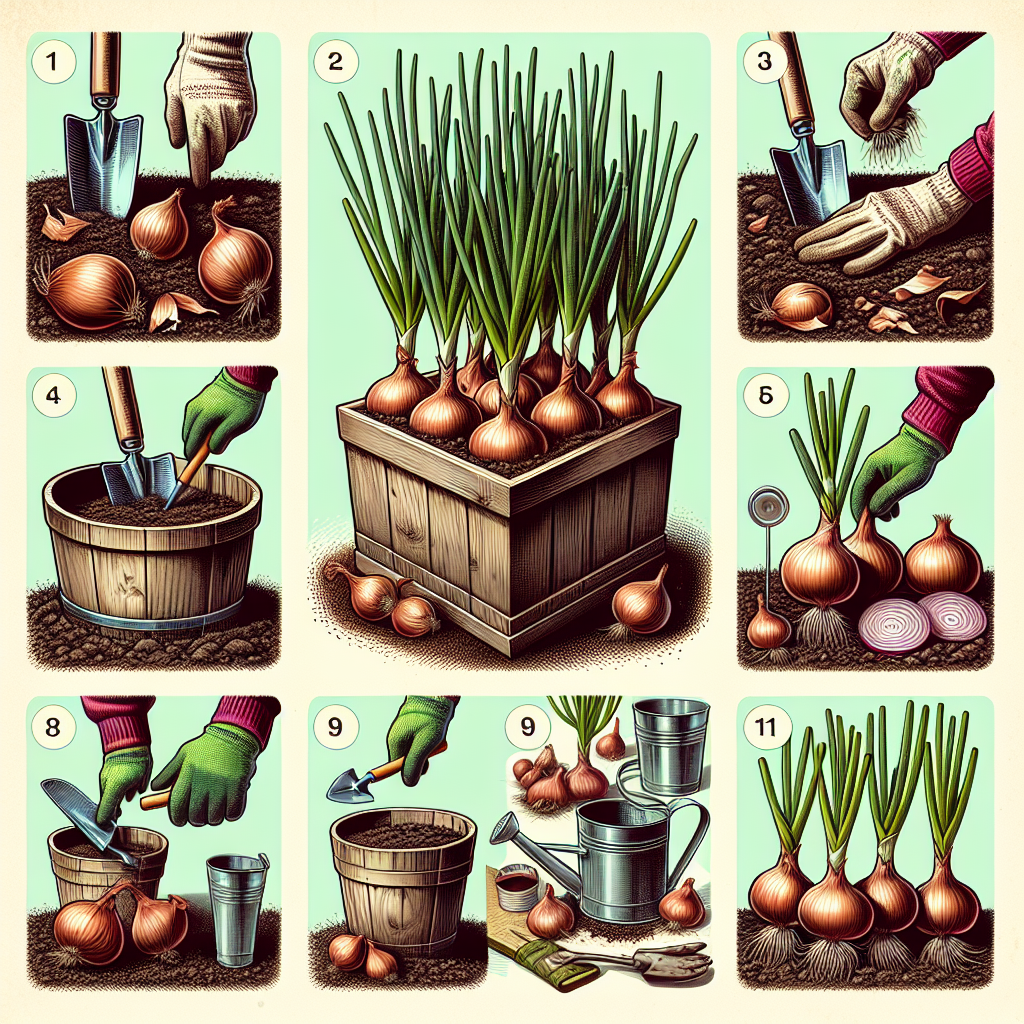Container Gardening 101: Growing Healthy Onions
Container gardening has become increasingly popular in recent years, as more and more people are discovering the joy of growing their own fresh produce right at home. One vegetable that is particularly well-suited for container gardening is the humble onion. Onions are easy to grow, require minimal maintenance, and can thrive in a variety of climates. In this article, we will discuss everything you need to know about container gardening onions so that you can enjoy a bountiful harvest of this versatile and flavorful vegetable.
Choosing the Right Container
The first step in growing healthy onions in containers is to choose the right container. Onions have shallow roots, so they do not require a deep container. A wide and shallow pot or planter works best for growing onions. Make sure the container has adequate drainage holes to prevent waterlogging, which can cause root rot.
You can use any type of container for growing onions, including plastic pots, ceramic planters, wooden boxes, or even recycled containers like old buckets or barrels. Just make sure that the container is large enough to accommodate the number of onions you want to grow and that it is made from non-toxic materials.
Selecting Onion Varieties
There are many different varieties of onions available, each with its own unique flavor profile and growing requirements. When choosing which onion variety to grow in containers, consider factors such as taste preferences, bulb size, storage capabilities, and how long it takes for the onions to mature.
Some popular onion varieties that are well-suited for container gardening include:
– Red Baron: A sweet red onion with a mild flavor.
– Walla Walla: A large yellow onion with a sweet taste.
– White Lisbon: A small white onion with a sharp flavor.
– Candy: A hybrid yellow onion known for its sweetness.
You can also experiment with growing green onions (also known as scallions) in containers for a continuous harvest of flavorful green stalks.
Preparing the Soil
Onions prefer loose, well-draining soil rich in organic matter. Before planting your onions, prepare the soil by mixing in compost or aged manure to improve fertility and texture. You can also add a slow-release fertilizer to provide essential nutrients for healthy growth.
Fill your chosen container with the prepared soil mixture up to about 1-2 inches below the rim. Avoid compacting the soil too tightly as this can hinder root development and water drainage.
Planting Onions
Onions can be grown from seeds, sets (small bulbs), or transplants (young plants). Depending on your preference and availability, choose the planting method that works best for you.
If starting from seeds:
– Sow seeds directly into the container at a depth of about 1/4 inch.
– Keep the soil consistently moist until seedlings emerge.
– Thin out weak seedlings to ensure proper spacing between plants.
If using sets:
– Plant sets about 1 inch deep into the soil with their tips facing upwards.
– Space sets about 4-6 inches apart within the container.
– Press sets gently into the soil to secure them in place.
If using transplants:
– Dig small holes in the soil slightly larger than the root ball of each transplant.
– Place transplants into holes and cover roots with soil.
– Water transplants thoroughly after planting to help them establish quickly.
Caring for Your Onion Plants
To ensure healthy growth and maximum yields from your onion plants, follow these care tips:
Watering:
Onions prefer consistent moisture but do not tolerate waterlogged conditions. Water your plants regularly but allow excess water to drain away freely. In hot weather or during dry spells, increase watering frequency to prevent dehydration.
Fertilizing:
Feed your onion plants every 2-3 weeks throughout their growing season with a balanced fertilizer high in nitrogen. This will promote strong leafy growth and help bulbs mature properly. Avoid over-fertilizing as this can lead to excessive foliage production at the expense of bulb development.
Mulching:
Apply a layer of organic mulch around your onion plants to help retain soil moisture, suppress weeds, and regulate temperature fluctuations. Mulching also protects bulbs from direct sunlight exposure which can cause sunscald on tender skin.
Supporting:
As your onion plants mature and bulbs begin forming underground,
they may need some support
to prevent them from toppling over under their own weight.
Use stakes or cages
to prop up tall varieties
and keep them upright
until harvest time.
Harvesting Onions
Onion bulbs are ready for harvest when their tops start turning yellow and begin falling over naturally.
To ensure optimal storage life,
harvest your onions on a dry sunny day when both foliage
And soil are completely dry.
Carefully lift bulbs out of
the ground using a trowel
or garden fork,
taking care not
to bruise or damage
the skins.
Leave harvested onions outdoors
For several hours Or indoors In an airy place With good ventilation To cure The Skins And boost The Bulbs’ Storage Potential.
Once The Skins Are Dry And Papery,
Trim Off The Tops About An Inch Above The Bulb And Store Them In A Cool Dry Place With Good Airflow.
Conclusion
Growing healthy onions In containers Is Easy And Rewarding When You Follow These Simple Guidelines For Planting,
caring For,
And Harvesting Your Crop.
Whether You’re An Experienced Gardener Looking To Expand Your Skill Set Or A Novice Grower Interested In Trying Out Container Gardening For The First Time,
Onions Are An Excellent Choice For Successful Cultivation.
With Adequate Sunlight,
Proper Watering,
Nutrient-Rich Soil,
And A Little Bit Of Patience,
You Can Enjoy Delicious Homegrown Onions That Will Add Flavor And Nutritional Value To Your Favorite Dishes.
So Get Started Today And Grow Healthy Onions In Containers To Experience The Joy Of Harvesting Fresh Produce Right At Home.
Happy Gardening!













